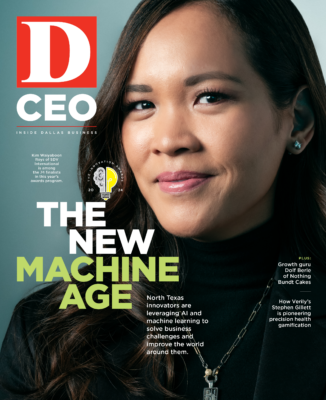Sometime this year, Dallas voters will be asked to approve a $1.1 billion bond package addressing key infrastructure investments for the city. Two of the five key areas of focus—parks and recreation and streets and transportation—account for more than 65 percent of the total pie. This emphasis reflects the growing importance of mobility and placemaking on cities designed for the future.
“We have streets in downtown that are so old, the water mains under them are ceramic,” says Jennifer Scripps, president and CEO of Downtown Dallas Inc., an organization that works to improve infrastructure and economic competitiveness “The Field Street district, for example, does not have the infrastructure to come out of the ground without the city stepping up.”
Scripps made the comments at a recent “Design Forecast Live” panel hosted by the Dallas office of Gensler, a global design, architecture, and planning firm. The purpose, says Steven Upchurch, principal and co-managing director, was to talk about how to thrive in tomorrow’s creative economy through smart urban design and planning, with a focus on mobility and reclaiming the human experience.
“Over the past several years, we’ve obviously experienced radical change, and new tensions and crises are coming out of what we’ve left behind in the pandemic,” Upchurch said. “Our economy has healthy prospects driven by a balance of factors. … Leaders and organizations can secure a solid transformative future for the Dallas Fort Worth area.”
Along with Scripps, panelists were Steve Aldrich, senior vice president of Hillwood; Lucy Billingsley, partner at Billingsley Co.; and Joseph Pitchford, managing director of Crescent Real Estate. Here are some highlights from the discussion:
LUCY BILLINGSLEY: “I remember when office space was a commodity, and all anyone cared about was the price of the space and maybe location. Today, office space is the brand of your company. It impacts your culture. It says who you are, and it helps you attract and retain people. Multifamily has obviously changed, too. We used to stamp out buildings. When we first got into multifamily, our tagline was, ‘Apartments without the complex.’ We paid attention to walkability and the neighborhood and how it evolves. … What we try to do as a developer is jump in and fill the void. We say, ‘What is the nature of this place? How do we do the streets and the parks and build in engagement, and then the buildings around that. Developers today are in the events business. We’re trying to create the sense that you’re in a club. So, think of a country club; what are all the amenities, and how do we give you that membership?”
STEVE ALDRICH: “Hillwood’s AllianceTexas is 27,000 acres. Being out in front of the infrastructure piece, whether it be roads, power, or water, has been critical for us. Placemaking is important, and we do it, but we also work to help people to quickly get in and out of a suburban project. That’s infrastructure, and that’s one of our main focuses right now. Power is another issue, and water will become one. I would encourage cities to take a look at their comprehensive plans. The days of these employment centers and old zonings have led to office parks that have zero personality and zero amenities. There’s got to be a higher, better use for some of that space, and it’s probably going to be housing. Affordable housing is an issue, and cities need to start getting comfortable with fulfilling a need. They might not want it, but it’s going to be better for the city.”
JOSEPH PITCHFORD: “Our development group is built around the premise that every project makes a place, no matter how big or small the site is. For example, American Airlines’ headquarters campus is 300 acres. But it was not a place until Gensler and Crescent and [landscape architect] Jim Burnett got together to redevelop what was like a broken community college campus covered with surface parking lots. It opened in the fall of 2019, so there is a pandemic angle here, too. The CEO of American once pulled me aside and said, ‘If we hadn’t done what we did to this campus when we did and if we had tried to bring people back to work after the pandemic at our old place, they would not have come back. But, they came back. American has recovered brilliantly from the pandemic because it had a place.”
JENNIFER SCRIPPS: “For the past 15 years, DDI has been working on its 360 plan, which is built around three priorities: building complete neighborhoods, promoting great placemaking, and advancing urban mobility. Of these, urban mobility is the most fundamental and I think the heaviest lift. If you are looking at an office landscape where people need to race into their office and then at the end of the day get their cars back on the toll road, it’s a very different street and mobility need than helping people hang out in the Arts District or walk to grab a cup of coffee or go to a brewery. This work is important on the human scale and on the macro scale—making sure we get our highways right and that things like high-speed rail happen. But for downtown, we have to catch up with ourselves on the smaller scale.”
Author








